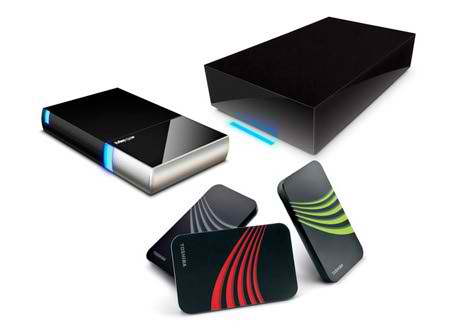
Purchasing an external hard drive is an ideal way to increase the storage potential of your computer. They can be used to store large files, data back-ups and any data you’d like to be protected. There are several different types of external hard drives on the market to choose from. Before you purchase an external hard drive, however, you will need to ensure that it is compatible with your computer and will suit your needs.
Types of External Hard Drives
There are several types of external hard drives that are pre-built and ready to go, out of the box. Below are common types of hard drive enclosures as described by CNet, a publication dedicated to consumer electronics.
· USB Flash Drive – These small, portable hard drives range from 2 GB to 128 GB. These drives can be slower, but they make up for it in portability. CNet suggests that they are not ideal for data back-ups, but are excellent for regularly transporting information.
· 1.8 Inch External Enclosure – This smaller hard drive is typically used for solid-state drives (SSD), which are more expensive, but have been known to last longer. They do not have any moving components, increasing their lifespan and functionality. However, these externals can also have traditional hard drives. Due to their size, they do not typically require additional power and get everything need from the USB, or Firewire, connection.
· 3.5 Inch External Enclosure – This enclosure is used in conjunction with the same hard drives found in most desktop computers. They can also support SSDs; however, they typically house traditional hard drives. Due to their capabilities, they can be used with hard drives several terabytes in size. A user can purchase a separate hard drive and install it within an enclosure, allowing for massive storage potential. However, these enclosures will require an additional power supply, decreasing their overall mobility.
· Multi-Bay Enclosures – As the name implies, these enclosures are capable of housing multiple hard drives. They are typically connected internally through a RAID controller, meaning they will be presented to the computer as a single hard drive with massive storage. This is the least mobile, yet highest storage, choice. They will require their own power supply and are heavier than any other option.
Each different type of external hard drive will suit different needs. Carefully assess your storage and business needs, when determining which hard drive to select.
Connection Types and Compatibility
There are several types of interfaces predominantly seen across external hard drives that connect them to the computer. Inside of the external enclosure, the hard drive itself will be connected via a SATA 2 (3 GBPS) or SATA 3 (6 GBPS) connection. Below are common connection types:
· USB 2/USB 3 – This is the most common interface found among external enclosures. USB 2 has been the standard for years, however the faster USB 3 is included on most new devices. The connection speed will be ultimately determined by the USB drive on your computer; a USB 3 device will only be as fast as USB 2, if that’s what your computer has.
· Firewire – This is typically the preferred method for connecting external hard drives to Macs. Firewire ports are not generally found on Windows computers, unless installed by the end-user. The two options, Firewire 400 and Firewire 800, vary by the total speed available. Either will be compatible with Macs.
· eSATA – This new type of connection is not as common as the previous two, however it is still gaining prevalence. It offers increased transfer speed and is ideal for regular back-ups. According to TechCrunch, a website focused on technology, eSATA drives are not currently available for Macs without third-party adapters.
The type of interface will typically dictate the compatibility of the device. However, when researching specific hard drives, check the “Details” or “Specifications” area to check for compatibility. For example, an external hard drive for Mac use will specifically say so in its description.
Shop Around and Find the Best External for You
Understanding how you will use the device will help you wade through the various sizes, types and connections. If you will be using your external drive to transport data between locations, a USB flash drive or 1.8 inch enclosure is ideal. Conversely, if it will be used for regular back-ups, a 3.5 or multi-bay enclosure may be ideal. Ensure that any device is compatible with your computer; it will list compatible platforms under its specifications.
Image provided by Shehal Joseph from Flickr’s Creative Commons














